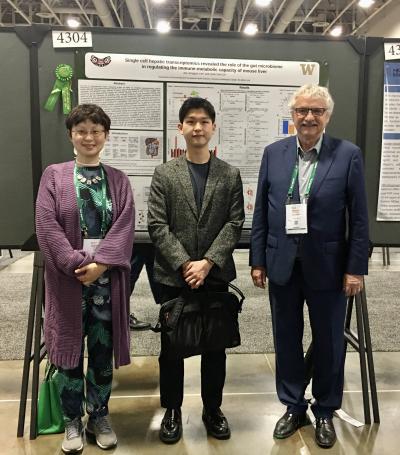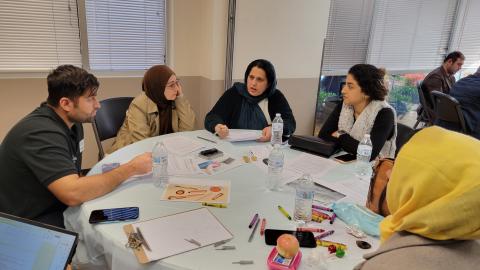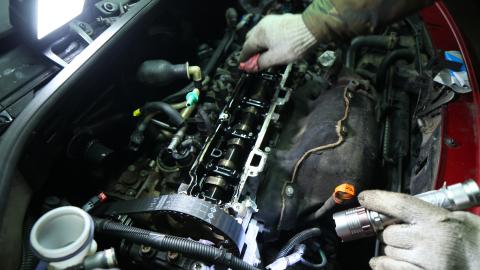When most people think about the causes of diabetes and obesity, they think about diet, physical activity and family history.
But when Joe Lim thinks about these diseases, he thinks about environmental toxicants that are often invisible to the senses yet can have an enormous impact decades into a person’s life.
Lim is a doctoral student in environmental toxicology in the UW Department of Environmental & Occupational Health Sciences (DEOHS) in the School of Public Health. He studies how early life exposure to environmental pollutants like flame retardants may contribute to the development of diabetes later in life.
Lim is being honored as a 2023-24 Magnuson Scholar, a scholarship given to a student in each of the UW health sciences schools for outstanding academic performance and potential contributions to research in the health sciences.
As a third-year PhD student, Lim has authored six full-length, peer-reviewed publications. He has presented at national conferences, served as a graduate-level guest lecturer and received awards for his toxicology work.
“Joe is a resilient and tenacious student and is not afraid to take on new challenges in his investigations,” said Lim’s adviser, DEOHS Associate Professor Julia Yue Cui. “He is highly independent and takes intellectual ownership of his project.”
Small chemicals with big impact

Lim first became interested in environmental toxicology as an ecology and evolutionary biology undergraduate at the UW. He was curious about how chemicals existing in our environment interact with the complex systems within our body.
“I had this thought: With the chemicals that we use to make our lives more convenient, would there be any potential impacts not only on the natural environment, but on the human environment as well?” Lim said.
He began exploring this question in further detail, first in Cui’s class as an undergraduate, and then in her lab as a doctoral student.
The chemicals Lim has been particularly interested in studying are flame retardants (specifically polybrominated diphenyl ethers, known as PBDE). Flame retardants were developed in the 1970s to prevent burning, thereby slowing a fire’s spread.
But these chemicals have been linked to many negative health consequences. Even though PBDEs have been banned for decades, the chemicals are slow to break down, and are found in food, drinking water and even human breast milk.
The risks of early life exposure to PBDEs
Women in the US have the highest levels of PBDEs in the world, putting newborns in the US at higher risk of exposure to these toxicities through breast milk. Lim is exploring how this early life exposure to PBDEs could impact the likelihood of getting diabetes later in adulthood.
“Our lab has found that early life exposure to certain flame retardants have downstream consequences that particularly impact the immune system as well as certain metabolic capabilities in the liver as well as other organs like the gut later in life,” Lim said.
“Now we’re trying to investigate whether or not the early life exposure to these chemicals can alter the incidence of liver diseases, as well as something like type 2 diabetes and other metabolic syndromes,” he said.
This is important research into a disease that is all too prevalent in the US. An estimated 37.3 million, or 11.3% of the U.S. population, have diabetes (Types 1 and 2 combined), according to the US Centers for Disease Control and Prevention. Diabetes was the eighth leading cause of death in the US in 2020.
Exploring the links between PBDEs, liver function and diabetes
Lim’s research looks at how flame-retardant chemicals like PBDEs reprogram the liver in adulthood into a low metabolically functioning state, which can lead to an increased risk of Type 2 diabetes later in life.
He found that Type 2 diabetes and other similar diseases have been closely associated with changes in the microbiome, the microorganisms that live in and on the host, and that exposure to pollutants like flame retardants can change the gut microbial taxa that impact various metabolic functions in organs like the gut and liver.
To do this work, Lim studied mouse models and found that early life exposure to these flame-retardant chemicals through breast milk altered normal development and contributed to the likelihood of getting diabetes. He also developed an innovative method to study the state of cell type populations using single cell transcriptomics.
Why PBDE exposure is a health equity issue
Although humans are ubiquitously exposed to persistent organic pollutants, including PBDEs, the work by Lim and the rest of Cui’s lab has important health equity implications, as certain socioeconomic groups face higher exposure to chemicals like PBDEs than others.
This could be for several reasons: purchasing power that allows people with more wealth to replace older products like furniture or buy newer homes that limit exposure; limited access to information about the dangers of exposure; and certain occupations that may place lower-income communities in greater contact with the chemicals.
Cui calls exposure to persistent environmental pollutants like flame retardants an environmental justice issue.
“The uneven burden of exposures to these toxicants falls along lines of indigeneity, race, socioeconomic status and age,” Cui said. “Vulnerable populations, including Indigenous communities, communities of color, low-income communities, as well as women and children, bear disproportionate burdens and toxic effects from these exposures.”
In the long term, Cui said Lim’s work will contribute to developing new remediation strategies that can help mitigate diabetes risk in adulthood.
Casual conversations lead to complex research

The process of metabolism itself continues to be exciting for Lim as an area of study.
“I think it’s pretty amazing how we take a burger, and the chemical composition is not so useful to our body, so our body makes it useful as an energy source that our cells can use to produce ATP (a molecule that serves as the primary energy currency of cells) and nutrients, and that sustains our body,” he said.
Lim is also interested in the way cells communicate with each other about what work they’ve done in the metabolic process and what work the other cells need to continue. In a disease like diabetes, those signals sent between cells are altered.
Just as he’s intrigued by the conversations between cells, Lim has also been inspired in his research by the conversations he has with labmates and other scientists. These questions usually come up casually during coffee or happy hour with peers and colleagues. One person might ask, “What do you think would happen if…?”, and then the rest of the group will share their hypotheses.
At a recent conference, Lim was walking from poster to poster with his mentor Cui and her mentor Professor Curtis Klaassen. Klaassen randomly mentioned that it might be interesting to look at how the metabolic capabilities of different types of cell types in the liver are distributed and how metabolic functions of hepatocytes—the primary metabolic cell type in the liver—differ based on the oxygen accessibility that exists.
Lim said, “I think we have the data to do that.” Six months later, he presented a poster on the results at another conference. Even though it was a mini-study, the results provide useful information in disease progressions that impact the liver.
Lim hopes to continue doing research in a lab environment long term to answer questions about toxicology and the body.
“The initial ‘what if…’ and ‘how’ types of questions are still my favorite,” Lim said. “Just thinking about what could happen, what we could do to solve the potential problem and then how we could contribute to a greater good, is very fulfilling.”




